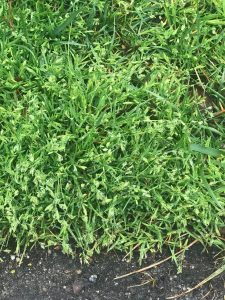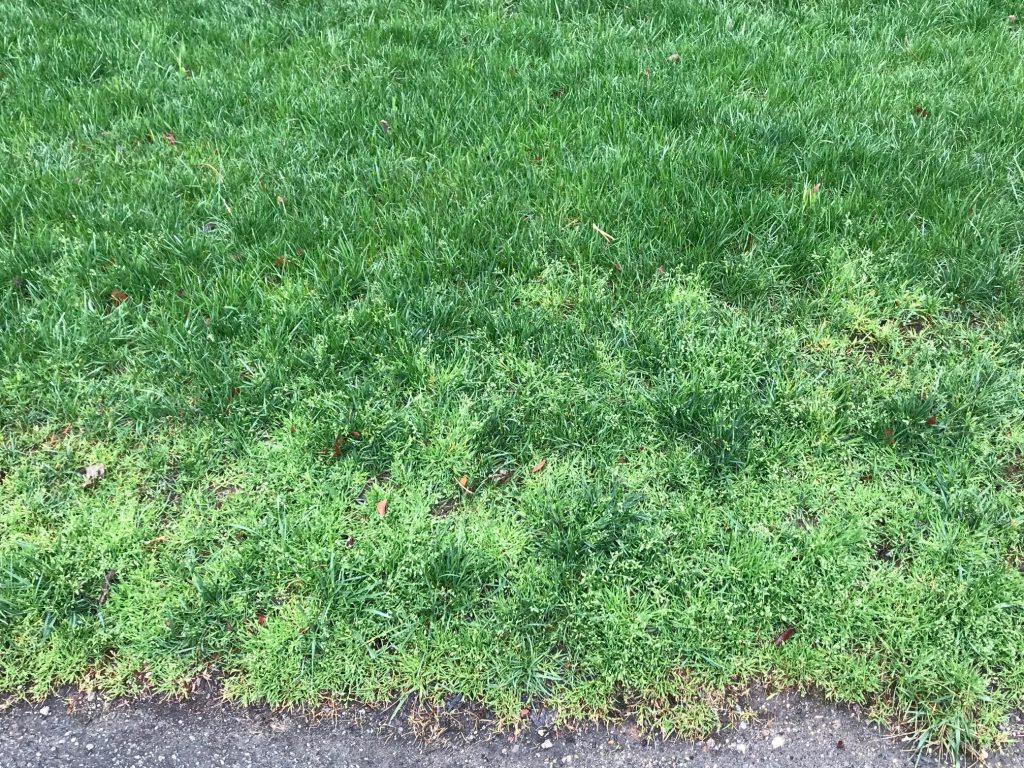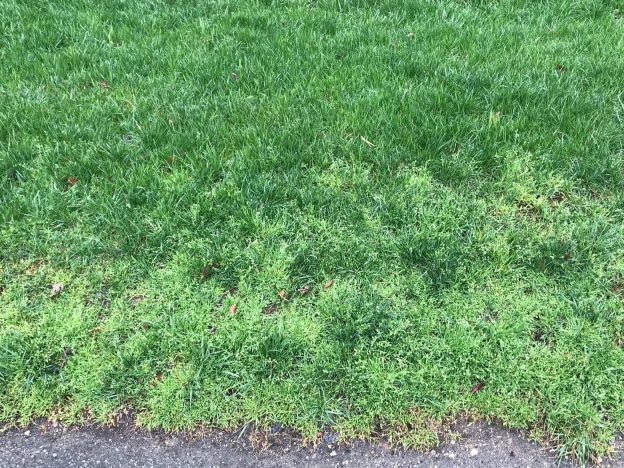Poa annua or Annual bluegrass puts on a showy display of its seedheads every spring just before it dies in our summer heat. What can be done now and in the future to better manage this important lawn pest?

Poa Annua is a clump-forming winter annual grass. It produces white seedheads in the spring and early summer and can decrease aesthetic value of turfgrass. You will recognize this plant by its light green color compared to most other turfgrasses, but more specifically by its prolific seedhead formation in mid-spring.
Most Poa behaves as a true winter annual plant; that is, it germinates in the fall, produces seed in the spring, and dies. Hence, the plant is nearing death very soon, so any attempts at chemical control are pretty much pointless at this time. Poa is an annual problem because of the prolific number of seed that it produces, so you will never eradicate it from your lawn and landscape—you will only be able to manage it.

In the above image, the area covered by the annual bluegrass was scalped by snow plows during the winter of 2018. Although the area was aerated and overseeded with tall fescue in the fall of 2019, the stand of fescue was not dense enough to out compete the annual bluegrass.
Though it is not of any help with the weedy mess you might have in your yard now, the best bet to reduce Poa populations for next spring is to plan on making a fall preemergent herbicide application in the first couple of weeks of September. Why not make a note of this on your calendars now so you won’t forget?
This control strategy works well on both Poa and a whole host of other winter annual broadleaf weeds (for example chickweed, deadnettle, henbit, geraniums, etc.) IF you DO NOT plan on seeding any desirable turfgrasses next fall. The herbicides available for homelawn use do not differentiate between weed or turf seeds. If annual bluegrass was a problem for you last year, it may be worth it to hire a lawn contractor to treat in the fall as they have additional chemical options available to them.
If you must reseed a cool-season turf, then do everything you can to enhance turf establishment such that the new grass overwhelms the Poa simply due to the competition. Your keys to success in establishment are things such as proper soil testing and preparation of the soil, appropriate seeding rates, proper mowing heights, optimal seeding timing, and irrigation management.
Compiled from various resources including: https://ext.vt.edu/lawn-garden/turfandgardentips/tips/poa-control.html and https://weedid.cals.vt.edu/weedimg/54.

